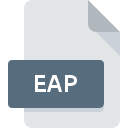.EAP File Extension

Enterprise Architect Project
| Developer | N/A |
| Popularity | |
| Category | Data Files |
| Format | .EAP |
| Cross Platform | Update Soon |
What is an EAP file?
.EAP file extension holds significant importance. This extension is associated with Enterprise Architect, a robust modeling and design tool used by professionals worldwide.
The .EAP file represents a project created and managed within the Enterprise Architect environment, encapsulating diagrams, models, requirements, and other essential elements of software development and system design processes.
More Information.
The initial purpose of the .EAP file extension was to provide a unified format for storing all project-related information within Enterprise Architect.
As the software gained popularity among software developers, system architects, and business analysts, the .EAP file became the standard means of preserving project integrity and facilitating collaboration among team members.
Over the years, Enterprise Architect evolved significantly, incorporating new features, improved methodologies, and enhanced compatibility with industry standards.
Consequently, the .EAP file extension underwent refinements to accommodate these advancements while maintaining backward compatibility with older versions of the software.
Origin Of This File.
The origins of the .EAP file extension can be traced back to the development of Enterprise Architect by Sparx Systems.
Enterprise Architect emerged in the early 2000s as a comprehensive solution for software modeling, system design, business process modeling, and other related tasks.
The .EAP extension became synonymous with Enterprise Architect projects, serving as the default file format for storing and sharing project data.
File Structure Technical Specification.
The .EAP file is essentially a relational database file that stores project data in a structured manner. Within the file, information is organized into tables, each representing a specific aspect of the project, such as diagrams, elements, connectors, packages, requirements, and more.
These tables are interlinked, allowing for seamless navigation and retrieval of project data within the Enterprise Architect environment.
The technical specifications of the .EAP file formats are proprietary to Sparx Systems, the company behind Enterprise Architect.
While the exact details of the file structure may not be publicly available, Sparx Systems provides extensive documentation and support resources for developers and users seeking to understand and manipulate .EAP files programmatically.
How to Convert the File?
Converting .EAP files to other formats may be necessary to facilitate interoperability with third-party tools or to meet specific project requirements.
While direct conversion tools for .EAP files may not be readily available, there are several approaches to achieve conversion:
- Export to Standard Formats: Enterprise Architect provides options to export project data to standard formats such as XML, XMI (XML Metadata Interchange), or CSV (Comma-Separated Values). Once exported, data can be further processed or converted using specialized tools or scripts.
- Custom Scripting: Developers can write custom scripts or programs to parse .EAP files and extract relevant information for conversion to desired formats. This approach offers flexibility but may require in-depth knowledge of the .EAP file format and programming skills.
- Third-Party Tools: Some third-party software tools may offer support for importing .EAP files and converting them to alternative formats. These tools may vary in terms of features, compatibility, and ease of use, so thorough research is recommended before choosing a tool for conversion.
Advantages And Disadvantages.
Advantages:
- Comprehensive Project Representation: .EAP files encapsulate all project-related data, ensuring that no information is lost or fragmented during storage or sharing.
- Cross-Platform Compatibility: Enterprise Architect supports multiple operating systems, allowing .EAP files to be seamlessly exchanged between Windows, macOS, and Linux environments.
- Version Control Integration: .EAP files can be integrated with version control systems, enabling teams to track changes, manage revisions, and collaborate more effectively on project development.
Disadvantages:
- Proprietary Format: The .EAP file format is proprietary to Enterprise Architect, limiting interoperability with other modeling and design tools.
- Large File Sizes: Projects stored in .EAP files can become large and unwieldy, especially for complex systems with numerous diagrams and elements.
- Dependency on Enterprise Architect: To fully leverage .EAP files, users must have access to Enterprise Architect software, which may require licensing fees or subscriptions.
How to Open EAP?
Open In Windows
- Install Enterprise Architect by downloading the setup file from the Sparx Systems website.
- Once installed, double-click the .EAP file to open it in Enterprise Architect.
Open In Linux
- Sparx Systems offers a Linux edition of Enterprise Architect, which can be downloaded and installed on supported distributions.
- Once installed, navigate to the .EAP file using the file manager and open it with Enterprise Architect.
Open In MAC
- Download and install Enterprise Architect for macOS from the Sparx Systems website.
- After installation, locate the .EAP file and double-click it to open in Enterprise Architect.













